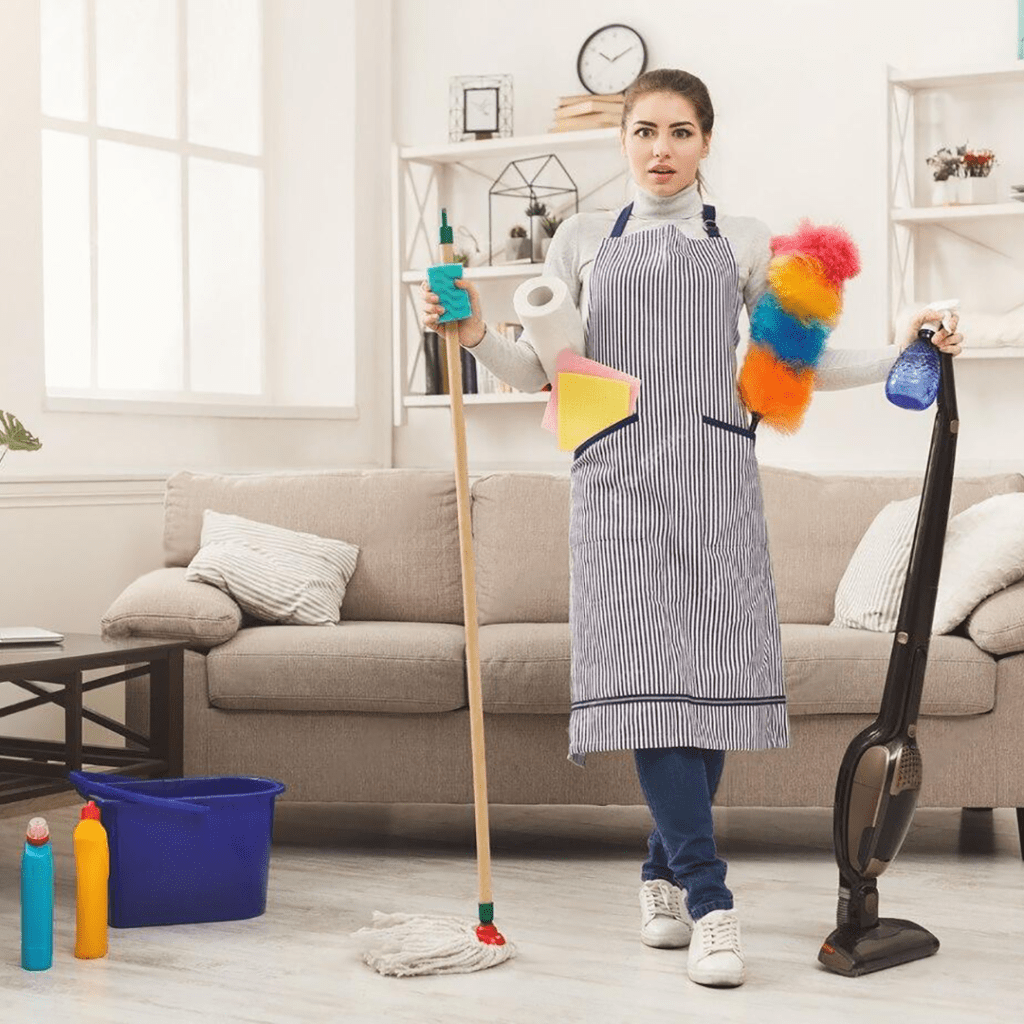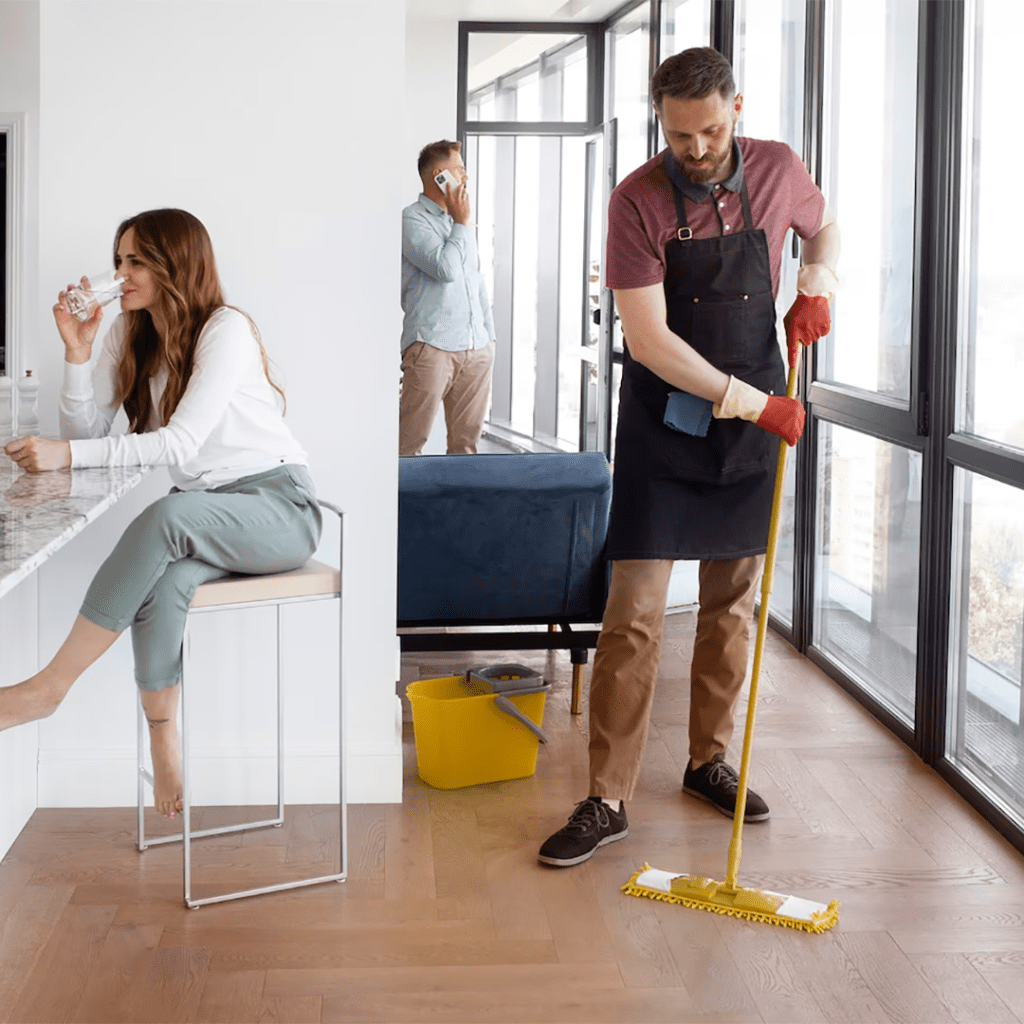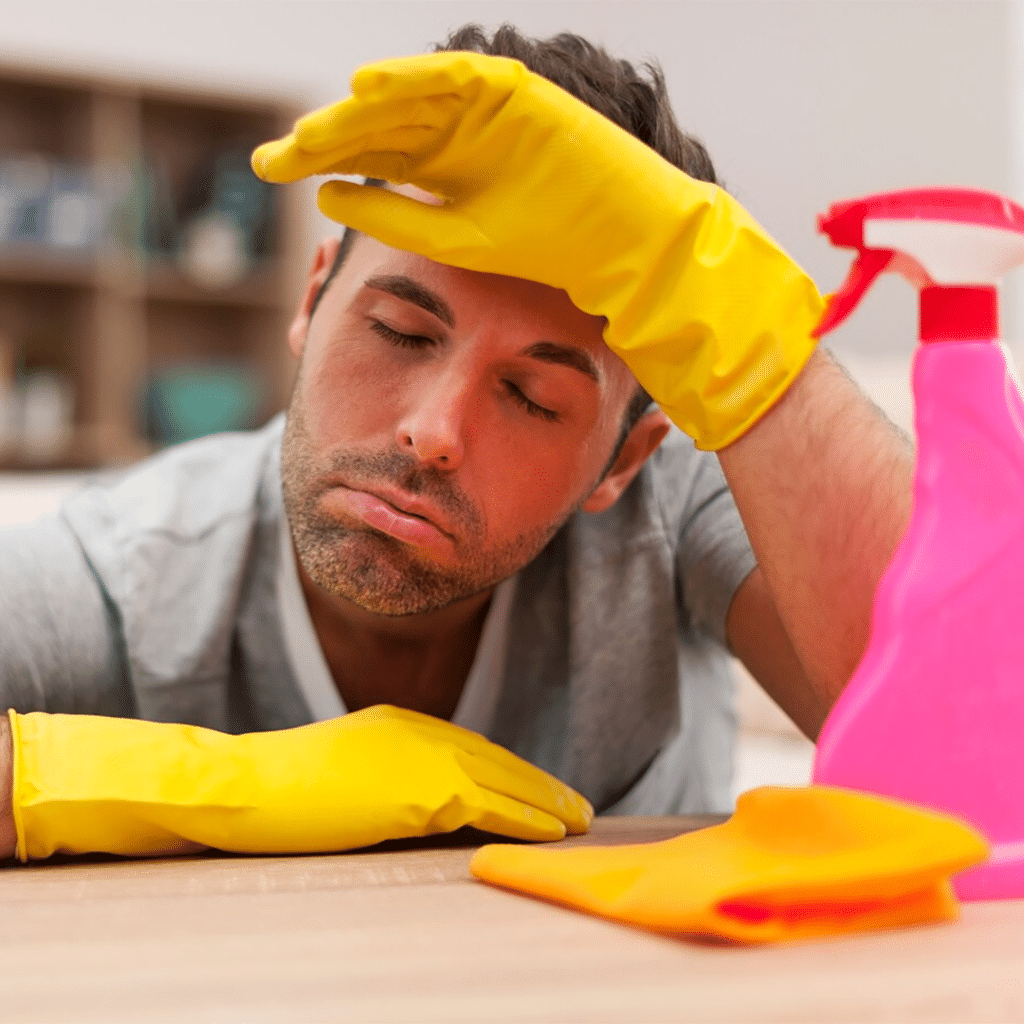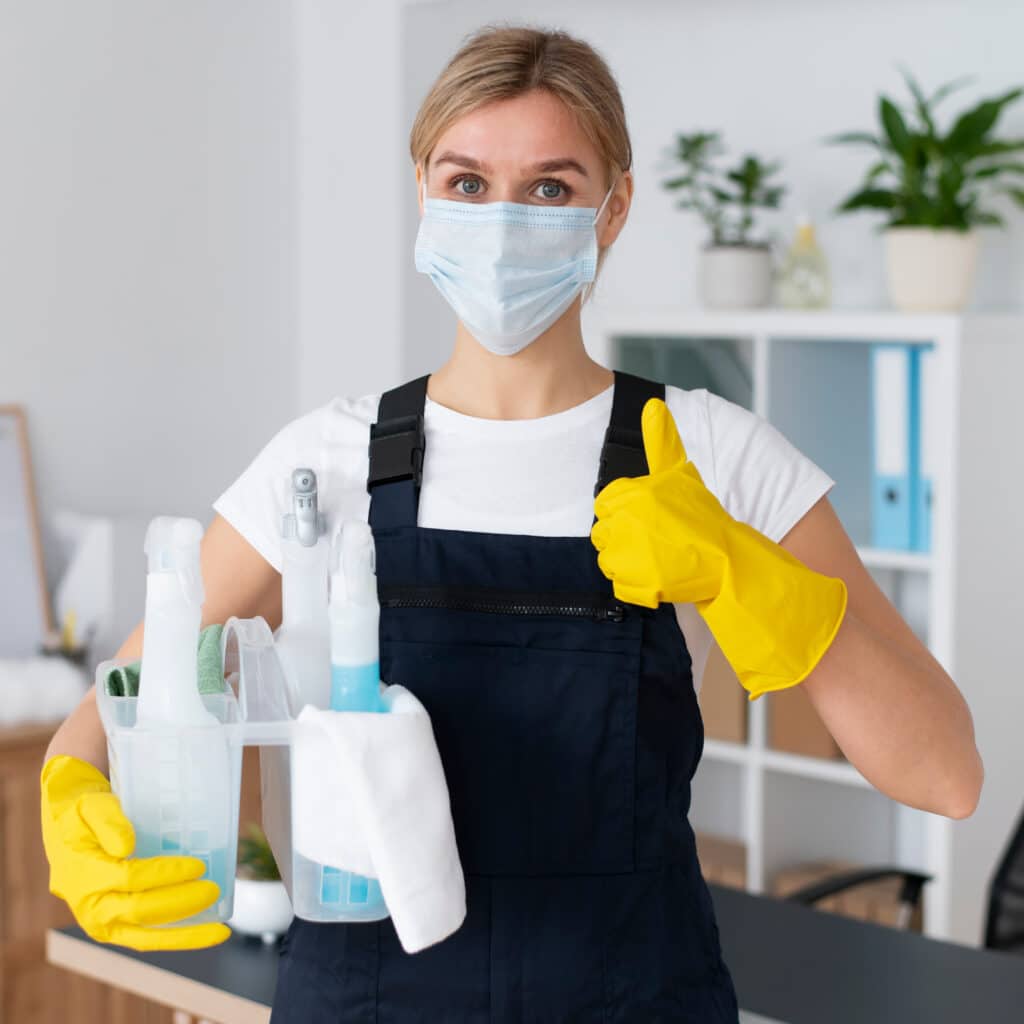Selecting and Using the Right Protective Equipment for Housecleaners

For a housecleaner, entering someone’s home is not just about bringing sparkle and shine; it’s also about ensuring they remain safe while doing so. Homes can host a myriad of hidden threats, from aggressive cleaning agents to invisible airborne contaminants. Recognizing these potential hazards is paramount, and the Canadian Housecleaning Association (CHCA) stresses the importance of being well-prepared. To arm our dedicated professionals with the right tools, we’re diving into the world of protective equipment.
Navigating the Equipment Spectrum
When exploring protective gear, it’s easy to get overwhelmed by the sheer variety. However, it’s essential to understand that not every piece of equipment is suited for all tasks. Your selection should be tailored according to the specific demands of the job.
For instance, latex gloves might be commonplace and are effective for regular cleaning. Yet, they’re not built to withstand harsh chemicals. This is where alternatives like nitrile or neoprene gloves, designed for heavy-duty tasks, come to the rescue. Being able to assess the nature of the cleaning job and match it with the right glove material can significantly elevate the quality of cleaning and protection.
Moreover, with the rise in specialized cleaning products, understanding their chemical makeup is crucial. This ensures that cleaners can anticipate potential reactions and select equipment that offers optimal protection.
Masks and Respirators: Beyond the Pandemic
While the pandemic brought masks and respirators to the forefront, their relevance in housecleaning has always been prominent. Homes can trap a variety of air contaminants, such as allergens, mold spores, or even pet dander.
Dust masks, though lightweight, only offer protection against certain particulates. On the other hand, N95 respirators, which filter out 95% of airborne particles, are better suited for more challenging environments. And in spaces where mold is a significant concern or where potent chemicals are in use, full-face respirators become indispensable. This ensures not only protection but also comfort, especially during prolonged cleaning sessions. Adapting to the environment is pivotal.
Gloves: The Hand’s Shield and Tool
Gloves serve a dual purpose. Not only do they protect the hands, but they also enable tactile feedback, which is essential for precision in cleaning tasks. The quintessential latex glove has its merits, but homes with intense cleaning demands require stronger materials like nitrile.
Additionally, with some professionals or clients being allergic to latex, alternatives like vinyl gloves gain prominence. The length of gloves is another factor to consider. For those dealing with potentially splashy scenarios, extended cuff gloves provide an added layer of protection. These considerations, though minute, can significantly impact a cleaner’s efficiency and safety.
Vision Protection: The Silent Sentinel
Eye protection is, unfortunately, an oft-overlooked aspect of protective gear. A mere droplet of a potent cleaning agent or a puff of dust can lead to severe eye discomfort or even injury. Safety goggles offer a comprehensive seal, ensuring that no harmful agents breach this defense.
Tasks that require substantial movement or deal with potential airborne threats necessitate safety glasses equipped with side shields. Advances in these protective glasses, such as anti-fog or scratch-resistant coatings, amplify the cleaner’s efficiency and safety, allowing for a clear field of vision at all times.
Securing the Feet: Anchoring Safety
Mobility is at the heart of housecleaning, and the right footwear is a must. Cleaners often find themselves moving over recently mopped tiles, polished wooden floors, or even navigating through cramped spaces. Here, non-slip shoes shine, offering unparalleled grip and reducing the chances of unfortunate slips.
Additionally, in homes where there’s a possibility of moving hefty objects or where tools are abundant, shoes with reinforced toe caps can protect against sudden impacts, ensuring the cleaner’s feet remain unscathed.
Maintenance: Extending Equipment Life
Even the best equipment demands care. Regular inspection of gear, particularly checking for signs of wear, tear, or damage, is vital. Post-use cleaning, ensuring all gear is free from residual chemicals, and storing them in appropriate conditions, not only extends their utility but ensures they offer optimal protection when needed.
Being a housecleaner is more than just tidying up spaces—it’s a responsibility to oneself and to the client. Proper protective gear stands testament to a cleaner’s dedication to their craft, ensuring that every cleaning task is not only executed to perfection but done safely. This holistic approach, combining skill with safety, is what the CHCA champions, and it is what sets apart true professionals in the domain of housecleaning.



Responses